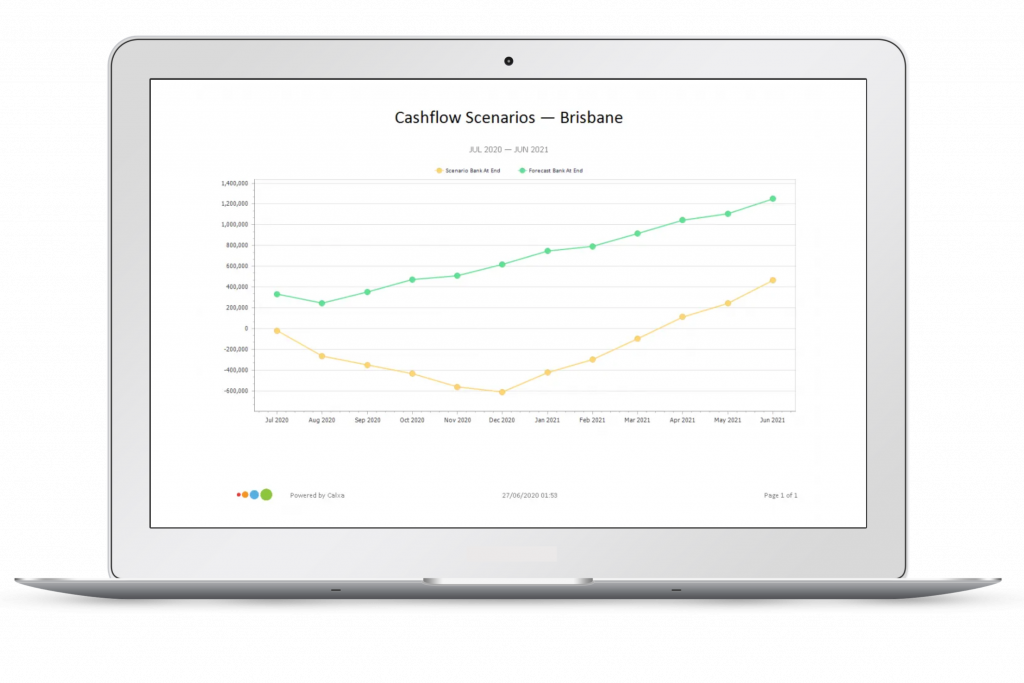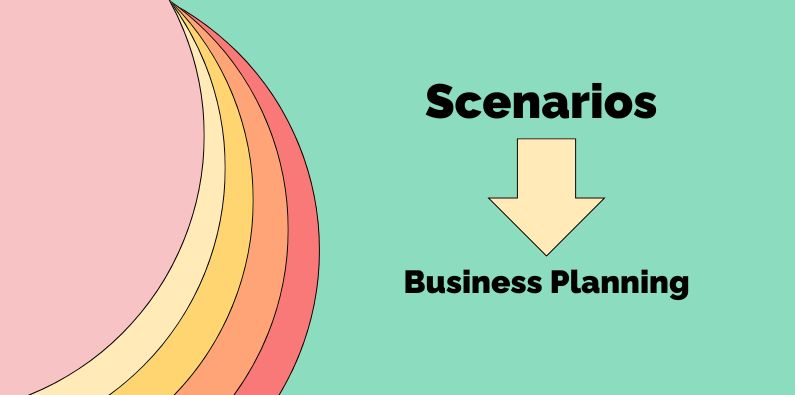You do have a business plan, don’t you? When you prepare your 2025 business plan, do you consider multiple possible futures for your organisation? Evaluating best-case, worst-case and most-likely scenarios can be valuable in deciding what to do. Make the best-case happen and avoid or mitigate the effects of the worst-case. Calxa has several tools to help with scenario building for your 2025 Business Plan.
Scenario Building Process
Scenario planning is useful for all organisations but especially for those with unpredictable cashflow. Most of us start our planning with a single budget which is what we expect to happen for the year. This is a great start and much better than doing nothing!
The last few years have taught all of us that the world can be an unpredictable place to do business. Changes to government policies have always had some effect on some businesses. However, this has never been more so than the strategies they invoked at different times to handle the COVID-19 pandemic. Those policies had big impacts on almost all businesses, some positive but many negative.
Your planning process can be greatly improved by considering different scenarios:
- What possible changes to the national or regional economy can you anticipate this year? How will you mitigate any negative impacts?
- How would the year look if revenue was 20% higher and what would you need to do to achieve this?
- What would happen if your business lost a major customer? What would need to change?
- If you’re a Not-for-Profit, what would happen if a grant wasn’t renewed?
By building and examining these alternative scenarios you increase your ability to react to changed circumstances. This process helps you to predict possible actions, possible impacts of change. From there, you can explore the different ways you might react to those changes. The change may not be exactly what you’ve put in your scenario . But, the act of thinking about 2 or 3 alternatives will put those options top of mind. After that, you’ll react much quicker to change. In a crisis, having anticipated what might happen, you’re in a much better place to make decisions quickly than if you’re unprepared.
Plan for Unlikely Scenarios
Consider how you plan and prepare for natural disasters as many of us do in our part of the world (we’re in Townsville, North Queensland). You consider the worst that might happen and how you would react to that and your range of possible responses. Here in North Queensland we plan for cyclone season every summer. A few years back it was a major flood that closed the office and made it unsafe for the team to travel. Having alternate plans and strategies in place, everyone knew immediately what their role was and there was scarcely any interruption to our business. Have a look at our Business Continuity Plan Video.
But you should also try to plan for some of the unlikely scenarios. Even if you model just one or 2 of them (because there are millions of possible scenarios), you help your team plan for any of them. For example, when our government asked us to work from home at the beginning of the pandemic, everyone in the team was prepared and knew what to do. This was a result of spending years preparing for cyclones. We had systems in place and it was simple to implement. Plan for one disaster and you’ll improve your resilience to any of them.
Plan Scenarios for your Business Plan
It’s the same with business planning. None of us knows the future but we can still make some reasonable guesses. Think of the range of likely scenarios and 1 or 2 of the unlikely ones. Working as a team you can plan how you would react and then you can incorporate that into your annual budgets. A budget is one possible version of your financial future but it is never the only possibility. A good business plan will consider alternatives, even if they are unlikely. You probably don’t need to re-visit the extreme cases every year.
Use Calxa for your Planning
Calxa provides some useful tools to help you build your alternate scenarios:
- When you add Scenarios in Calxa, you are effectively budgeting for the anticipated changes. This could be the expected increase (or decrease) in your revenue and the associated costs. Think of each scenario as a layer to add to your budget until you have made the final evalution.
- When you are putting together your business plan for the year (or updating your 5 year plan if that’s your style), there will be competing plans that you could implement. Create budget scenarios for each of them and then switch to Preview Mode to see how they work with your core forecast. Mix and match 1, 2 or more scenarios to see what is the best combination of projects to get the best outcome. You’ll be able to easily see the differing effects on your bottom line.
- Similarly, use the Cashflow Scenario line chart to show the cashflow effect of different combinations of scenarios. When you start the process it won’t be obvious which are the best projects or which are the best to combine. Each will have timing differences in terms of costs and revenue so combining them will give you a clear picture of the potential outcomes.
- Once you have decided on your plans, monitor KPIs for early warning signs of problems so that you take action on your Plan B before you hit serious trouble. Your accountant can advise you on which KPIs might be most suited to your organisation;
- Use the Cashflow Scenario Line Chart (see below) to compare the cashflow effect of your scenarios side by side. This chart is a great tool to help with your decision-making.

By investigating 2 or more scenarios and then comparing their effect on your cashflow you can make informed decisions. Often, you’ll find that one scenario is better short-term and the other long-term. At any point, you’ll need to decide on the relative merits of that. Other times one is clearly better for your cashflow, And, that’s important for any business.
In Closing
Planning is vital to the success of any organisation. However, forecasting alternate futures will make you better prepared for the inevitable changes that will happen in your world over the next 12 months.
You can find more information on how Calxa can help with scenario building for your business plan in our Budget Scenario with Calxa Guide.
